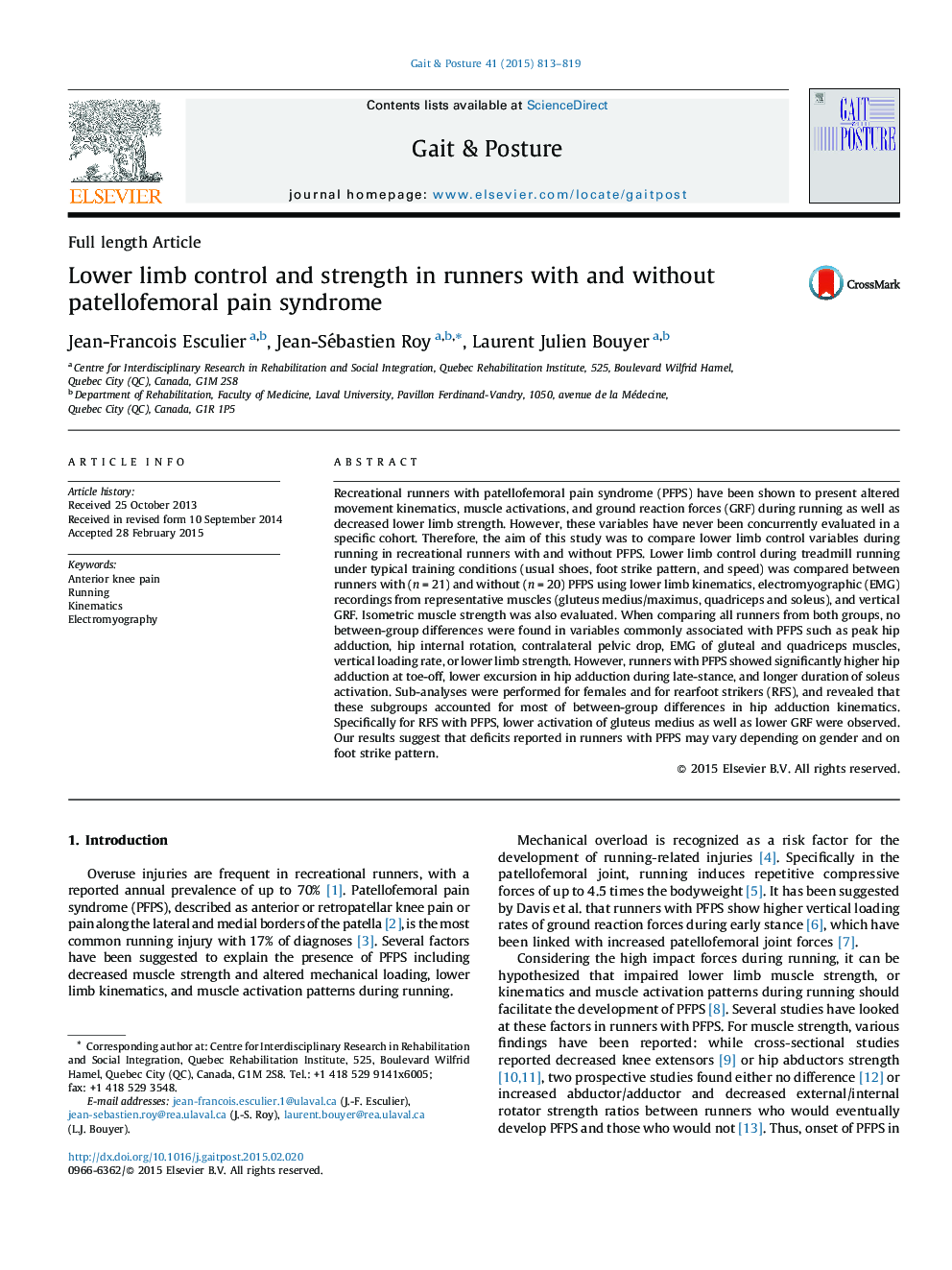| کد مقاله | کد نشریه | سال انتشار | مقاله انگلیسی | نسخه تمام متن |
|---|---|---|---|---|
| 6206247 | 1265642 | 2015 | 7 صفحه PDF | دانلود رایگان |
- Runners with and without PFPS were assessed during treadmill running.
- Overall, no differences in previously identified risk factors for PFPS were found.
- Sub-analyses were performed for females and rearfoot strikers.
- Increased HADD was found at toe-off in females and RFS with PFPS.
- RFS with PFPS had lower GMed EMG activity and vertical ground reaction forces.
Recreational runners with patellofemoral pain syndrome (PFPS) have been shown to present altered movement kinematics, muscle activations, and ground reaction forces (GRF) during running as well as decreased lower limb strength. However, these variables have never been concurrently evaluated in a specific cohort. Therefore, the aim of this study was to compare lower limb control variables during running in recreational runners with and without PFPS. Lower limb control during treadmill running under typical training conditions (usual shoes, foot strike pattern, and speed) was compared between runners with (n = 21) and without (n = 20) PFPS using lower limb kinematics, electromyographic (EMG) recordings from representative muscles (gluteus medius/maximus, quadriceps and soleus), and vertical GRF. Isometric muscle strength was also evaluated. When comparing all runners from both groups, no between-group differences were found in variables commonly associated with PFPS such as peak hip adduction, hip internal rotation, contralateral pelvic drop, EMG of gluteal and quadriceps muscles, vertical loading rate, or lower limb strength. However, runners with PFPS showed significantly higher hip adduction at toe-off, lower excursion in hip adduction during late-stance, and longer duration of soleus activation. Sub-analyses were performed for females and for rearfoot strikers (RFS), and revealed that these subgroups accounted for most of between-group differences in hip adduction kinematics. Specifically for RFS with PFPS, lower activation of gluteus medius as well as lower GRF were observed. Our results suggest that deficits reported in runners with PFPS may vary depending on gender and on foot strike pattern.
Journal: Gait & Posture - Volume 41, Issue 3, March 2015, Pages 813-819
